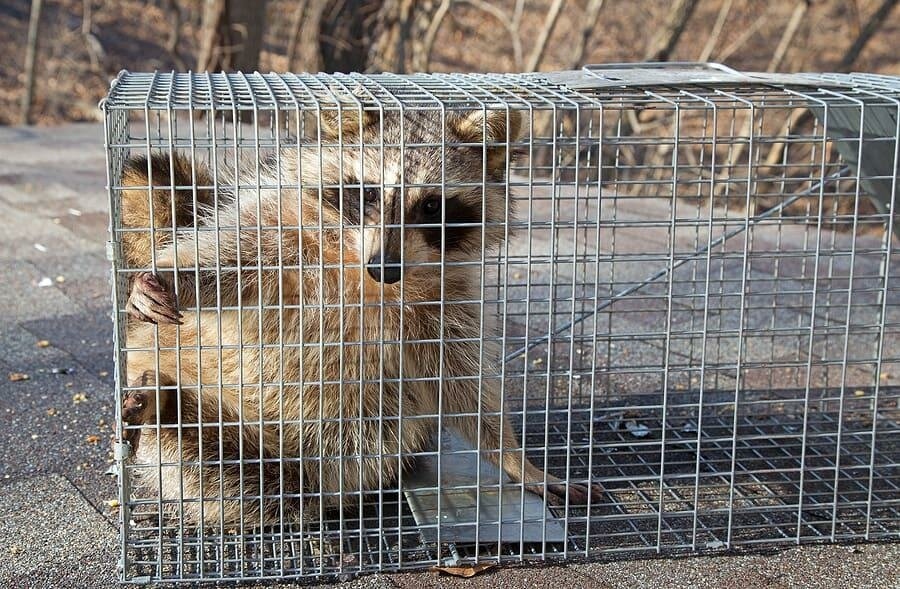Discovering a wild animal in your home is a stressful experience. Your first priority is to get it out, quickly and safely. For decades, the standard solution often involved methods that were effective for the homeowner but harsh on the animal and the environment—lethal traps, potent poisons, and exclusion techniques that could leave young animals orphaned inside walls.
Today, a more thoughtful and sophisticated approach has emerged. Eco-friendly wildlife removal is built on a simple but powerful principle: it is possible to resolve human-wildlife conflicts effectively while showing respect for the animal and the local ecosystem. This isn’t a sentimental luxury; it’s a smarter, more sustainable method of pest management that often provides better, longer-lasting results for your property.
Norfolk’s unique environment, nestled between the Chesapeake Bay and urban landscapes, demands this kind of mindful approach. The choices we make in our backyards can have a ripple effect on the health of our local waterways and wildlife populations. Choosing an eco-friendly service means you are not just solving an immediate problem; you are making a conscious decision to protect the natural balance of our community.
The Problem: The Shortcomings of Traditional Wildlife Control
To understand the value of the eco-friendly approach, it helps to first look at why older methods often fall short or create new problems.
The Cycle of Inhumane and Ineffective Practices
Traditional removal often focuses on the symptom—the animal in your attic—without addressing the cause. This leads to a frustrating and repetitive cycle.
- Lethal Trapping and Poison: Using poison or kill traps may remove one animal, but it does nothing to deter others. In fact, it can create a “vacuum effect,” where new animals move into the now-available territory. Poisons are also indiscriminate; they can be consumed by non-target animals, including family pets or protected species, causing a cascade of ecological damage. They also pose a risk of an animal dying in an inaccessible part of your home, leading to odor and insect issues.
- Orphaning Young: Without a thorough inspection, a traditional service might remove an adult raccoon or squirrel, unknowingly leaving behind a litter of young. This is not only inhumane but also creates a new, more complex problem as the babies eventually die or attempt to leave the nest, causing further damage and odor.
- Temporary Exclusions: Simply patching a hole with wood or caulk is often a temporary fix. A determined animal can easily chew through these materials, and the scent trails left behind will continue to attract new visitors.
The Environmental Impact of Harsh Chemicals
Many conventional pest control methods rely on powerful chemical repellents and pesticides. When it rains, these chemicals can wash off your property, entering the soil and eventually flowing into Norfolk’s storm drains, which lead directly to our local rivers and the Chesapeake Bay. This contributes to water pollution, harming aquatic life and degrading the water quality of our precious coastal ecosystem.
The Eco-Friendly Solution: A Humane and Holistic Process
Eco-friendly wildlife removal is a systematic and thoughtful process that prioritizes long-term prevention and coexistence over short-term eradication.
Step 1: Ethical Inspection and Identification
The process begins with a deep understanding of the situation. A certified eco-friendly wildlife removal Norfolk technician acts more like a detective than an exterminator. They carefully identify the species, its point of entry, and the reason it chose your property. Most importantly, they determine if young people are present. This crucial step prevents the inhumane scenario of orphaning and ensures the entire family unit is addressed together.
Step 2: Humane Eviction and Exclusion
This is the core of the eco-friendly method. Instead of lethal measures, the primary tool is humane exclusion.
- One-Way Doors: For many animals, like raccoons and squirrels, technicians install one-way exclusion doors over the main entry point. These clever devices allow animals to leave to forage but prevent them from re-entering. This is a stress-free way to encourage the entire family to relocate on their own terms.
- Hand-Removal of Young: If babies are present and accessible, they are safely retrieved by hand and reunited with their mother outside in a temporary reunion box, allowing her to move them to a new, natural den site.
- Permanent, Animal-Proof Sealing: After ensuring all animals have left, the technician doesn’t just patch holes; they fortify your home. They use durable, chew-proof materials like steel mesh, hardware cloth, and specialized flashing to seal every potential entry point. This doesn’t just keep the current problem out; it deters all future wildlife, making your home permanently more secure.
Step 3: Habitat Modification and Natural Deterrents
An eco-friendly service goes a step further by asking, “What made my property attractive in the first place?” They will provide guidance on simple habitat modifications to make your yard less inviting. This can include:
- Securing trash cans with locking lids or bungee cords.
- Removing fallen fruit from yards and picking ripe berries from bushes.
- Installing chimney caps and vent screens before animals move in.
- Trimming tree branches back from the roofline to limit access.
- Using natural, plant-based repellents instead of harsh chemicals to discourage animals from returning to specific areas.
Step 4: Eco-Conscious Cleanup and Sanitization
After the animals are gone, they leave behind biohazards like droppings, urine, and nesting materials. An eco-friendly service tackles this with the same mindful approach. They use enzyme-based, biodegradable cleaners and hospital-grade, eco-friendly disinfectants to break down waste and eliminate odors. These products are powerful against pathogens but break down harmlessly in the environment, preventing chemical runoff into our local watershed.
The Tangible Benefits: Why This Approach is a Win-Win
Choosing an eco-friendly service provides clear advantages for your home, your conscience, and your community.
A More Permanent Solution for Your Home
By focusing on exclusion and habitat modification, eco-friendly removal addresses the root cause of the problem. You aren’t just removing one animal; you are making your property fundamentally less attractive to all wildlife. This leads to a more durable, long-term solution, saving you money and stress from recurring infestations.
Protection for Your Family and Pets
This method is inherently safer. There are no toxic poisons that could accidentally be ingested by your children or pets. The humane techniques avoid cornering and agitating animals, which reduces the risk of a defensive attack. The use of green cleaning products also means your living space is sanitized without being doused in harsh, lingering chemicals.
A Positive Contribution to Norfolk’s Ecosystem
This is the broader benefit. By choosing an eco-friendly service, you are actively participating in the conservation of our local environment. You are:
- Protecting Non-Target Species: Ensuring that beneficial animals like songbirds and pollinators are not harmed by poisons or traps.
- Supporting Biodiversity: Allowing native wildlife to play their natural role in the ecosystem, just not inside your home.
- Safeguarding Water Quality: Preventing chemical pollutants from entering the Chesapeake Bay watershed.
The Value of Peace of Mind
There is a profound sense of satisfaction that comes from resolving a conflict humanely. Knowing that you’ve handled a difficult situation with compassion for the animal and respect for the environment provides a peace of mind that traditional, lethal methods cannot offer.
When wildlife crosses the line into your living space, action is necessary. But the kind of action you take matters. Eco-friendly wildlife removal represents a smarter, more responsible way forward. It proves that you don’t have to choose between protecting your property and protecting the environment. By hiring a service that values humane techniques, permanent exclusion, and green practices, you are making an investment in a safer home and a healthier, more balanced Norfolk for everyone.



